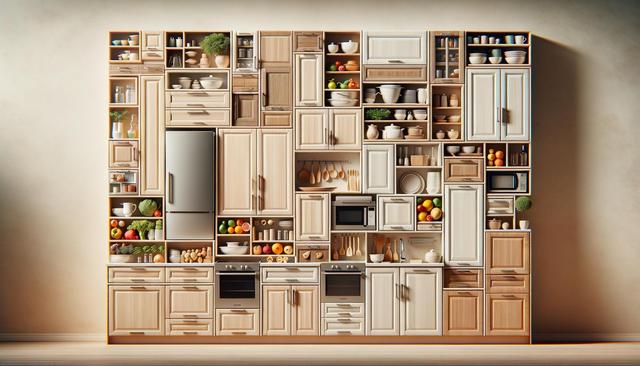Understanding the Basics of Kitchen Cabinet Painting
Painting kitchen cabinets can be a practical way to refresh your space without the cost of full cabinet replacement. However, it’s not as simple as applying a fresh coat. Cabinets are typically made from wood, laminate, or MDF, and each material requires specific preparation and paint types. Before you begin, it’s important to identify the cabinet material and consider how paint will adhere to its surface. The key to a successful transformation lies in proper prep work, including cleaning, sanding, and priming. Skipping these steps can lead to poor adhesion, peeling, or an uneven finish.
While DIY cabinet painting is feasible, it demands patience and attention to detail. If you’re planning to take it on yourself, make sure you allocate enough time—most projects take several days from start to finish. Investing in high-quality tools and materials can also make a significant difference in the final result. A well-painted set of cabinets can dramatically change the appearance of your kitchen, adding brightness and a sense of cleanliness to the entire space.
Choosing the Right Paint and Tools
Not all paints are suitable for kitchen cabinetry. For durability and a smooth finish, it’s advisable to use paints specifically formulated for trim or cabinetry. These paints are designed to resist moisture, stains, and frequent cleaning—important qualities in a kitchen environment. You’ll also need a strong primer to ensure the paint adheres well and lasts over time.
Here’s a list of tools and materials typically needed for this project:
- Degreaser or TSP (trisodium phosphate) for cleaning
- Fine-grit sandpaper or sanding block
- Primer suitable for the cabinet surface
- High-quality brush and foam roller or paint sprayer
- Cabinet paint (semi-gloss or satin finish is common)
- Painters tape and drop cloths
Consider the color scheme of your kitchen when choosing paint. Lighter shades can make a small kitchen feel more spacious, while darker tones add depth and sophistication. It’s also worth sampling a few shades before committing, as lighting can affect how colors appear throughout the day.
Preparing Your Kitchen for the Project
Preparation is arguably the most crucial part of painting kitchen cabinets. Start by removing all cabinet doors, drawers, and hardware. Label each piece to make reassembly easier. Next, clean every surface thoroughly to remove grease and grime. Even invisible residues can interfere with paint adhesion, so this step should not be overlooked.
After cleaning, lightly sand the surfaces to help the primer stick. This doesn’t mean stripping the cabinets down to bare wood—just a light scuffing to create texture. Wipe away dust with a tack cloth before applying primer. Use painters tape to protect walls, countertops, and floors, and lay down drop cloths to catch drips and spills. A well-organized workspace can help you avoid costly mistakes and make the painting process more efficient.
Don’t rush the drying times between steps. Each layer—primer and paint—should be completely dry before applying the next. This patience will pay off in the form of a smoother, longer-lasting finish.
Application Techniques for a Professional Finish
When it’s time to apply the paint, technique matters. Start with a high-quality primer, applying it evenly across all surfaces. Once dry, sand lightly and clean the surface again. For the paint itself, you can use a brush for detailed areas and a foam roller or sprayer for large, flat sections. This combination helps achieve a smooth, even finish with minimal brush strokes or roller marks.
Apply paint in thin, even coats, allowing each coat to dry fully before adding the next. Most cabinets require at least two coats of paint. Avoid overloading your brush or roller, as this can lead to drips and uneven coverage. Painting cabinet doors while they are laid flat can help prevent runs and sagging in the paint.
For those seeking a particularly refined look, consider finishing with a clear protective topcoat. This adds durability and makes cleaning easier over time, especially in high-traffic kitchens.
Reassembly and Final Touches
Once the paint has fully cured, it’s time to reassemble your kitchen cabinets. Reattaching hardware and doors may seem straightforward, but take care to align hinges properly to avoid crooked doors or gaps. If your existing hardware looks dated or worn, this could be a good opportunity to upgrade to a more modern style that complements your new cabinet color.
Before putting items back into drawers and cupboards, ensure all surfaces are completely dry and hardened. This can take several days, even if the paint feels dry to the touch. Rushing this step might result in smudges or damage to your freshly painted surfaces.
As a final touch, clean up the workspace thoroughly and step back to evaluate the finished look. Painted kitchen cabinets can dramatically enhance the overall aesthetic of your home, and with the right approach, the results can be long-lasting and satisfying.
Conclusion: Is Painting Your Kitchen Cabinets Worth It?
Painting your kitchen cabinets offers a budget-conscious way to refresh your kitchen’s appearance without undergoing a full renovation. While the process requires time, effort, and attention to detail, the results can be highly rewarding. From choosing the right materials to applying the finishing touches, each step plays a vital role in the success of the project.
If you’re comfortable with DIY projects and willing to invest the necessary effort, painting your kitchen cupboards can provide a renewed sense of style and functionality. However, if you’re unsure about tackling the task yourself, consulting with a professional may help ensure a polished and durable finish. Either way, understanding the full scope of the project is essential to achieving results that are both attractive and enduring.






